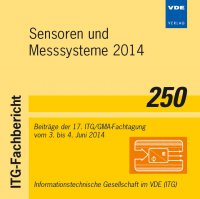Hybrid Indoor and Outdoor Positioning with MEMS-based Inertial Motion Sensors
Konferenz: Sensoren und Messsysteme 2014 - Beiträge der 17. ITG/GMA-Fachtagung
03.06.2014 - 04.06.2014 in Nürnberg, Deutschland
Tagungsband: Sensoren und Messsysteme 2014
Seiten: 5Sprache: EnglischTyp: PDF
Persönliche VDE-Mitglieder erhalten auf diesen Artikel 10% Rabatt
Autoren:
Kamil, Mustafa; Haid, Markus; Chobtrong, Thitipun; Günes, Ersan (Competence Center for Applied Sensor Systems (CCASS), University of Applied Sciences Darmstadt, Birkenweg 8, 64295 Darmstadt, Germany)
Inhalt:
In recent years, low-cost inertial navigation has been a well-known solution for indoor object tracking, navigating in densely built areas or in hybrid indoor-outdoor-environments. Since the required hardware for inertial navigation is very small, low-weight and widely available on the market, using MEMS motion sensors allows for various industrial, medical or entertainment applications to be realized at very low manufacturing costs. Due to the error characteristics these sensors have shown, their applicability has been limited to just simple tasks in smart phones, tablets etc. such as shaking detection, vibration measurement or bubble level applications. To overcome this problem, recent research at the CCASS has successfully achieved a sensor fusion technique for supporting an inertial navigation system (abbreviated as: INS) with GPS as a source of reference navigation. For this concept, short reference signal outages can be overcome by the INS reliably and the INS errors are limited to minimum values. In order to enable fields of application, that require both outdoor and indoor navigation, the present approach handles the realization of sensor data fusion between low-cost INS and GPS as well as the reference system development for long-term indoor application based on Wi-Fi hotspot signals or image processing. The overall goal is given in keeping the benefits of low-cost inertial navigation while obtaining the reference systems’ long-term stability and reliability in order to accomplish shading-free object navigation within a single low-cost system.


